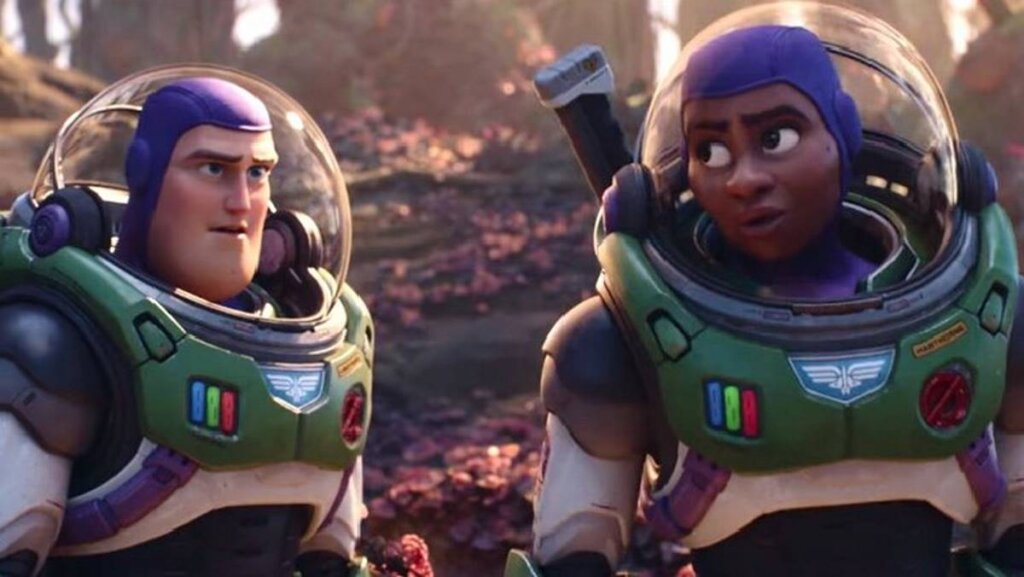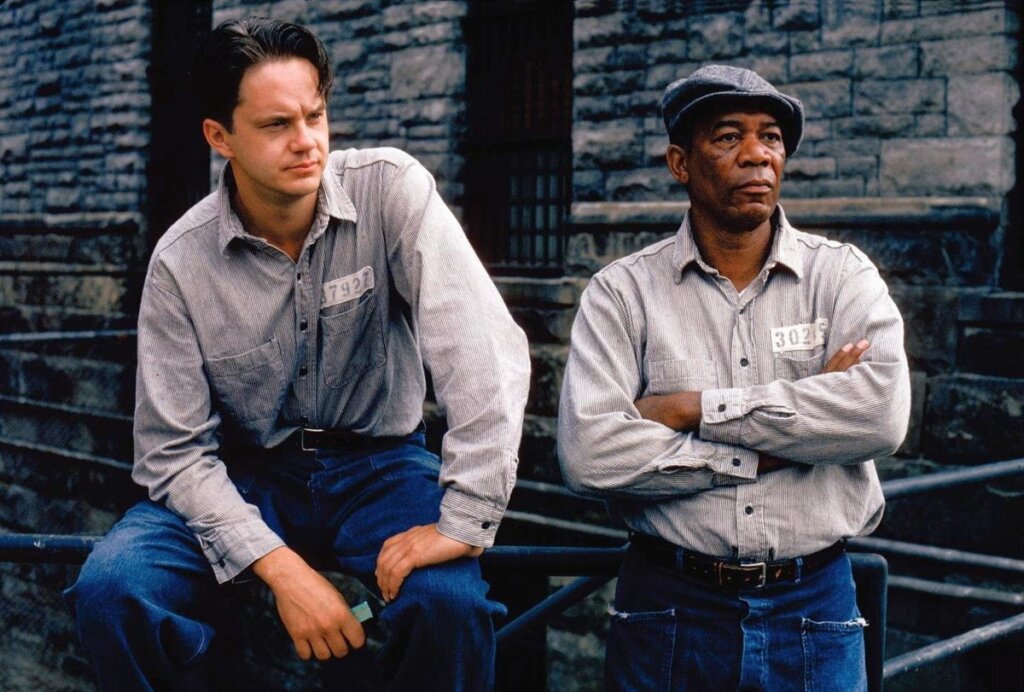Forced Diversity: Is It Really a Problem?


Written and verified by the psychologist Valeria Sabater
We understand forced diversity as the obligation to represent, in various artistic and cultural media, the social diversity of the population. In other words, people with skin color, sexual identity, or needs that go beyond the ‘norm’. In the world of cinema and tv, this phenomenon is interpreted as the misrepresentation of the characteristics of well-known characters to incorporate diverse narratives. However, occasionally, it doesn’t conform to logical or historical realities. For example, the representation of Anne Boleyn with black skin.
This reality began a few years ago and is now present in much of the content we consume. Indeed, both Disney and Netflix, have specific clauses that demand the appearance of increasingly diverse characters in their productions.
For example, there are movies like Coco or Encanto, and series like Atypical, The Good Doctor, and Bridgerton. So, is there really a problem?
It’s true that standards of inclusion and racial diversity are required right now. Indeed, what would happen if we didn’t give a presence to this group of people in spaces traditionally occupied by white, ‘normal’, and heterosexual characters? Let’s take a look.
Forced inclusion is a term often used by those people who are annoyed by the attempts of the world of cinema and tv to show other types of characters that were until recently, unseen.

Forced diversity: pros and cons
The term, forced diversity, is traditionally used by those who feel annoyed by the change in certain plot narratives of the audiovisual media. For example, women are now gaining more ground in the world of cinema. The roles have changed and girls no longer need to be saved.
Furthermore, black, Latin American, or Asian actors or characters are increasingly present, both in front of and behind the camera. The same happens with sexual diversity. Loki is, for instance, the first Marvel character to be openly bisexual. Then there’s the controversial movie, Lightyear, that’s already been banned in 14 countries for showing the first kiss between two people of the same sex.
Some see inclusion as a marketing strategy. Or, as the ‘woke’ political ideology ( the progressive mentality that seeks to combat all injustice, real or not), which has prevailed so much in recent years. Be that as it may, it’s obvious that it exists to give visibility and offer recognition to those who, until recently, didn’t have a presence in the public sphere.
Without a doubt, this is highly necessary.
Inclusion as a strategy to end discrimination
The Annenberg Inclusion Initiative is an American foundation that annually analyzes the processes of inclusion in the highest-grossing films. These analyses have been conducted since 2007. In the last report, it was noted that 41 percent of the main protagonists or co-stars in 2021 were women.
Of this total, 32 percent were of a historically excluded race or ethnicity. As encouraging as this data is, there are areas where progress isn’t being made. For example, from the age of 45, it’s unlikely that a woman will be given a leading role if they’re not a well-established actor like Meryl Streep or Frances McDormand. Black women have it even harder. Therefore, although great progress is being made, there are still groups that are being excluded.
We’re not faced with a phenomenon of forced inclusion, but of necessary inclusion to offer a voice and presence to those not usually seen on the big and small screen.
Until not long ago, the big production companies leaned towards a specific trend: choosing Caucasian, young, and heterosexual protagonists. Minorities appeared only as a prototypical phenomenon (Latinos who sell drugs and a socially disadvantaged black community, etc). Fortunately, this is changing.
When diversity is misrepresented
Forced diversity is often used in a derogatory way to criticize the attempt to represent social diversity. However, we can’t close our eyes to an undeniable truth. That’s the fact that, sometimes, in the materialization of the desire for inclusion, mistakes are made.
An example of this was Jodie Turner-Smith’s portrayal of Anne Boleyn. The phenomenon of forced diversity is real when historical facts become distorted by the mere desire to shoehorn racial diversity. It’s not correct.
Another example was the Oscar-winning film, Green Book (2018). Many black actors were offended by this production. In it, we saw a white protagonist acting as the savior of a black man. It was the classic moralizing feel-good movie, but, in reality, it missed its inclusive purpose.

Tokenism: a phenomenon must be reformulated
Tokenism is understood as a false attempt to promote inclusion by discriminated groups, stereotyping them even more. Green Book is an example of this. As is pigeonholing Latin American actors into roles linked to drug trafficking.
Tokenism often brings forced diversity, the kind that isn’t thought through and is applied by simply paying lip service to racial or sexual diversity. However, giving a voice and presence to the different groups in society implies creating profound and not merely stereotyped characters.
Many times we see movies where the characters and their narratives are so forced and stereotypical that they’re of little help to the social acceptance of diversity. We don’t want ‘add on’ characters like black or gay friends of the leading white protagonist.
Inclusion goes far beyond this image. It means representing different groups with roles that aren’t secondary, one-dimensional, extremely vulnerable, or poorly adapted.
We understand forced diversity as the obligation to represent, in various artistic and cultural media, the social diversity of the population. In other words, people with skin color, sexual identity, or needs that go beyond the ‘norm’. In the world of cinema and tv, this phenomenon is interpreted as the misrepresentation of the characteristics of well-known characters to incorporate diverse narratives. However, occasionally, it doesn’t conform to logical or historical realities. For example, the representation of Anne Boleyn with black skin.
This reality began a few years ago and is now present in much of the content we consume. Indeed, both Disney and Netflix, have specific clauses that demand the appearance of increasingly diverse characters in their productions.
For example, there are movies like Coco or Encanto, and series like Atypical, The Good Doctor, and Bridgerton. So, is there really a problem?
It’s true that standards of inclusion and racial diversity are required right now. Indeed, what would happen if we didn’t give a presence to this group of people in spaces traditionally occupied by white, ‘normal’, and heterosexual characters? Let’s take a look.
Forced inclusion is a term often used by those people who are annoyed by the attempts of the world of cinema and tv to show other types of characters that were until recently, unseen.

Forced diversity: pros and cons
The term, forced diversity, is traditionally used by those who feel annoyed by the change in certain plot narratives of the audiovisual media. For example, women are now gaining more ground in the world of cinema. The roles have changed and girls no longer need to be saved.
Furthermore, black, Latin American, or Asian actors or characters are increasingly present, both in front of and behind the camera. The same happens with sexual diversity. Loki is, for instance, the first Marvel character to be openly bisexual. Then there’s the controversial movie, Lightyear, that’s already been banned in 14 countries for showing the first kiss between two people of the same sex.
Some see inclusion as a marketing strategy. Or, as the ‘woke’ political ideology ( the progressive mentality that seeks to combat all injustice, real or not), which has prevailed so much in recent years. Be that as it may, it’s obvious that it exists to give visibility and offer recognition to those who, until recently, didn’t have a presence in the public sphere.
Without a doubt, this is highly necessary.
Inclusion as a strategy to end discrimination
The Annenberg Inclusion Initiative is an American foundation that annually analyzes the processes of inclusion in the highest-grossing films. These analyses have been conducted since 2007. In the last report, it was noted that 41 percent of the main protagonists or co-stars in 2021 were women.
Of this total, 32 percent were of a historically excluded race or ethnicity. As encouraging as this data is, there are areas where progress isn’t being made. For example, from the age of 45, it’s unlikely that a woman will be given a leading role if they’re not a well-established actor like Meryl Streep or Frances McDormand. Black women have it even harder. Therefore, although great progress is being made, there are still groups that are being excluded.
We’re not faced with a phenomenon of forced inclusion, but of necessary inclusion to offer a voice and presence to those not usually seen on the big and small screen.
Until not long ago, the big production companies leaned towards a specific trend: choosing Caucasian, young, and heterosexual protagonists. Minorities appeared only as a prototypical phenomenon (Latinos who sell drugs and a socially disadvantaged black community, etc). Fortunately, this is changing.
When diversity is misrepresented
Forced diversity is often used in a derogatory way to criticize the attempt to represent social diversity. However, we can’t close our eyes to an undeniable truth. That’s the fact that, sometimes, in the materialization of the desire for inclusion, mistakes are made.
An example of this was Jodie Turner-Smith’s portrayal of Anne Boleyn. The phenomenon of forced diversity is real when historical facts become distorted by the mere desire to shoehorn racial diversity. It’s not correct.
Another example was the Oscar-winning film, Green Book (2018). Many black actors were offended by this production. In it, we saw a white protagonist acting as the savior of a black man. It was the classic moralizing feel-good movie, but, in reality, it missed its inclusive purpose.

Tokenism: a phenomenon must be reformulated
Tokenism is understood as a false attempt to promote inclusion by discriminated groups, stereotyping them even more. Green Book is an example of this. As is pigeonholing Latin American actors into roles linked to drug trafficking.
Tokenism often brings forced diversity, the kind that isn’t thought through and is applied by simply paying lip service to racial or sexual diversity. However, giving a voice and presence to the different groups in society implies creating profound and not merely stereotyped characters.
Many times we see movies where the characters and their narratives are so forced and stereotypical that they’re of little help to the social acceptance of diversity. We don’t want ‘add on’ characters like black or gay friends of the leading white protagonist.
Inclusion goes far beyond this image. It means representing different groups with roles that aren’t secondary, one-dimensional, extremely vulnerable, or poorly adapted.
All cited sources were thoroughly reviewed by our team to ensure their quality, reliability, currency, and validity. The bibliography of this article was considered reliable and of academic or scientific accuracy.
- Informe de la Iniciativa de Inclusión Annenberg, School for Communication & Journalism (2021) https://www.hollywoodreporter.com/movies/movie-news/diversity-movies-study-annenberg-inclusion-initiative-1235109900/
- Madrid, Alejandro L. (2017). «Diversidad, tokenismo, músicas no canónicas, y la crisis de las humanidades en la academia estadounidense» Ricercare (7): 79-85. ISSN 2346-4747
This text is provided for informational purposes only and does not replace consultation with a professional. If in doubt, consult your specialist.







